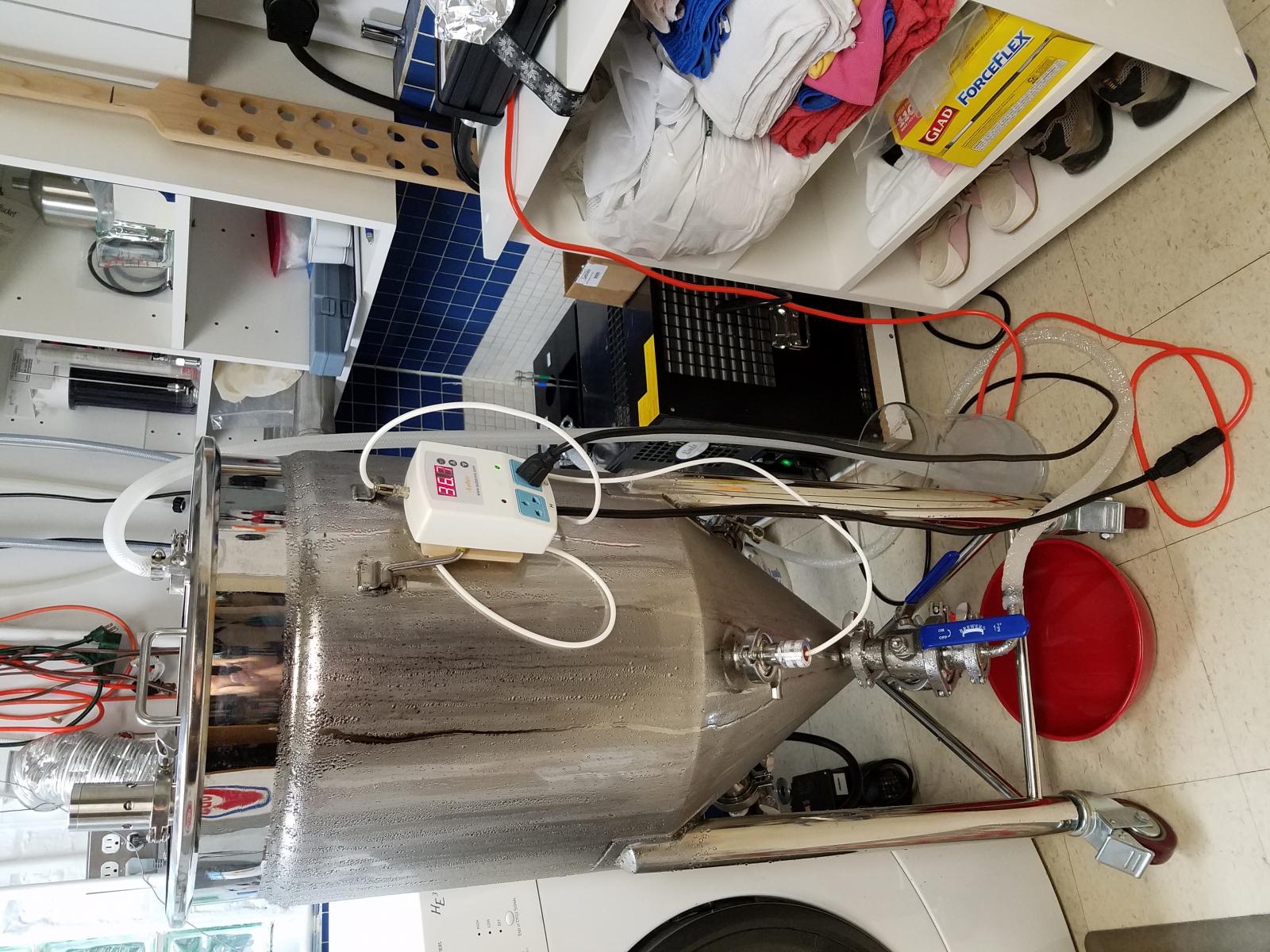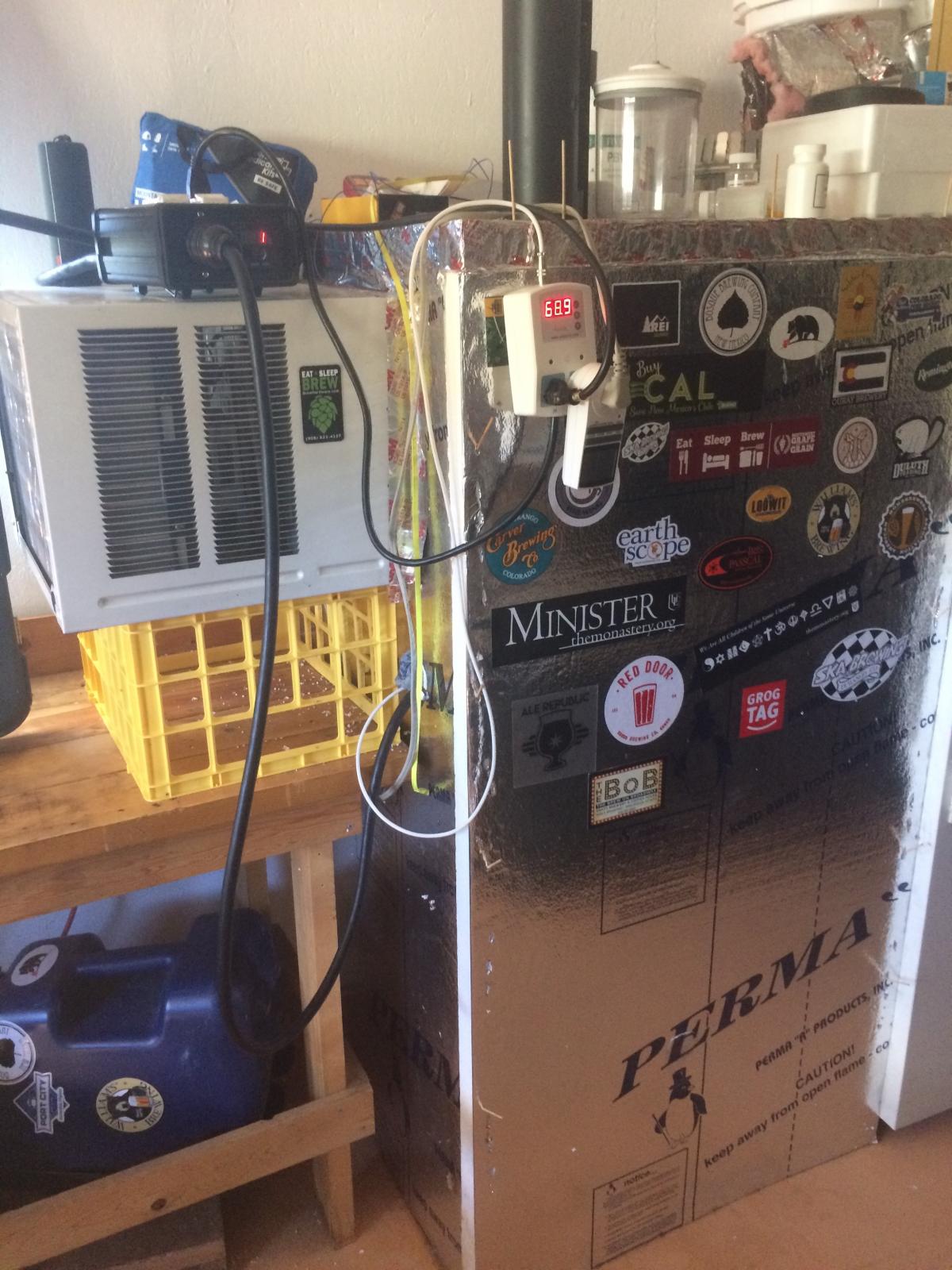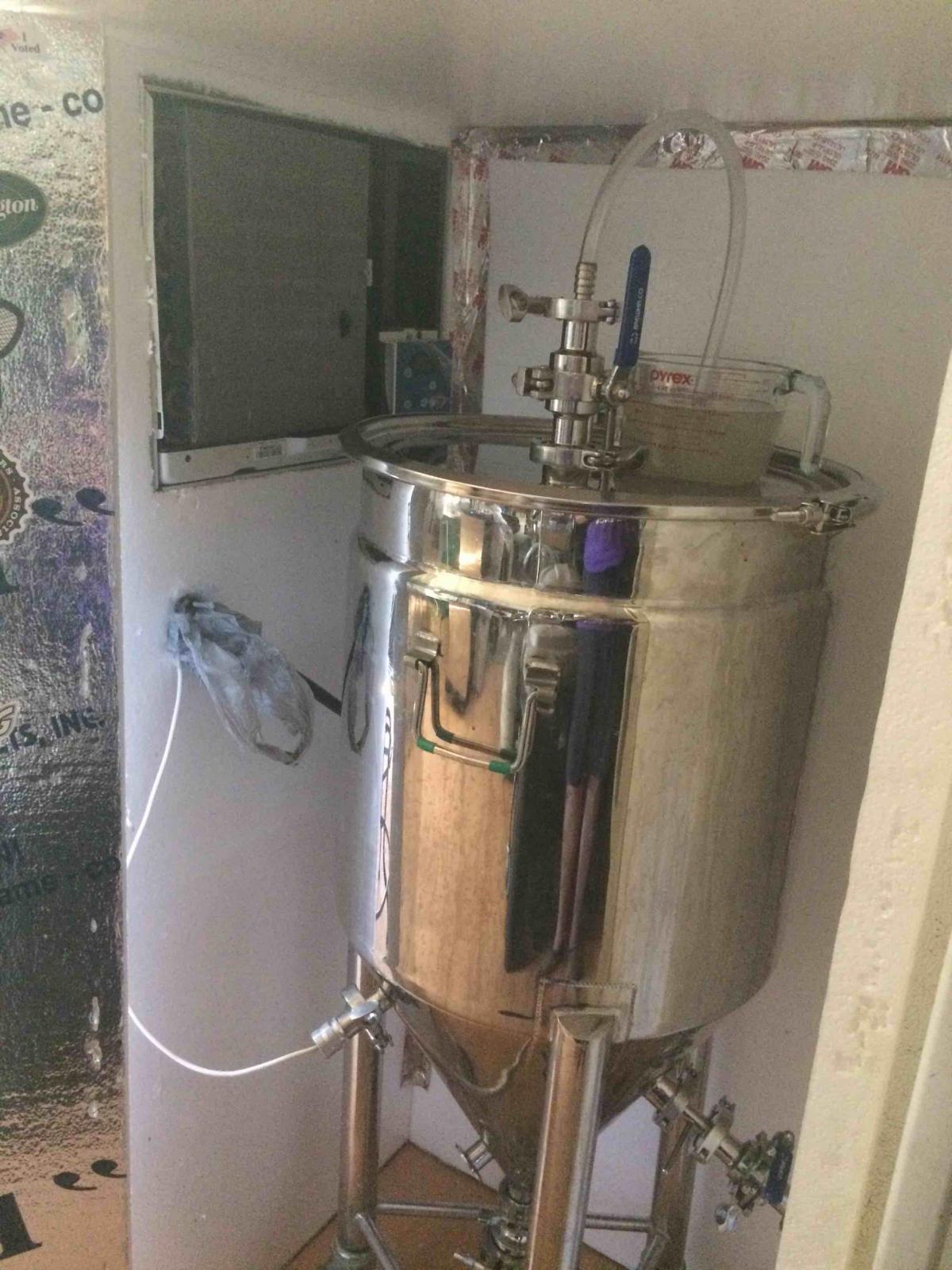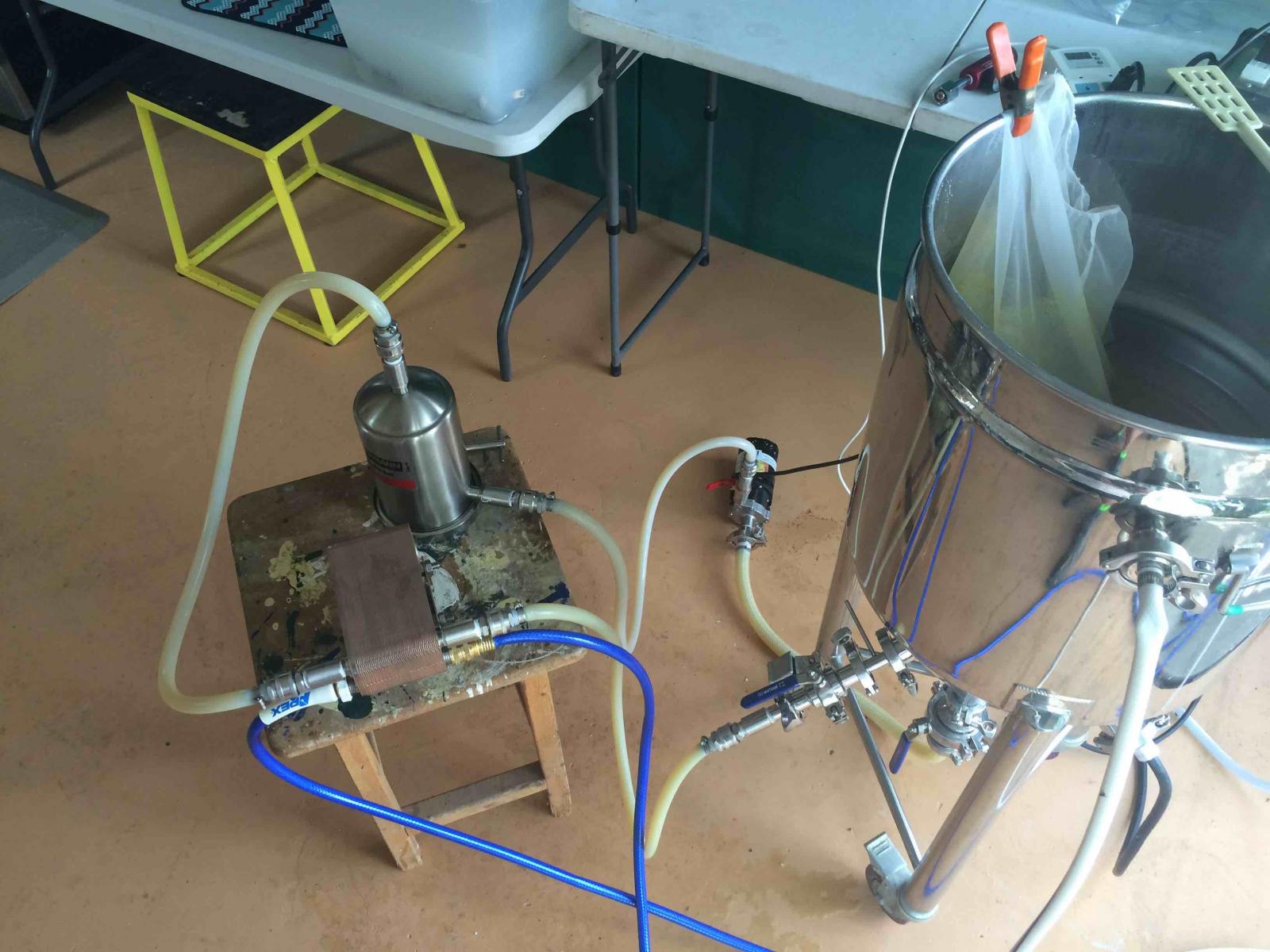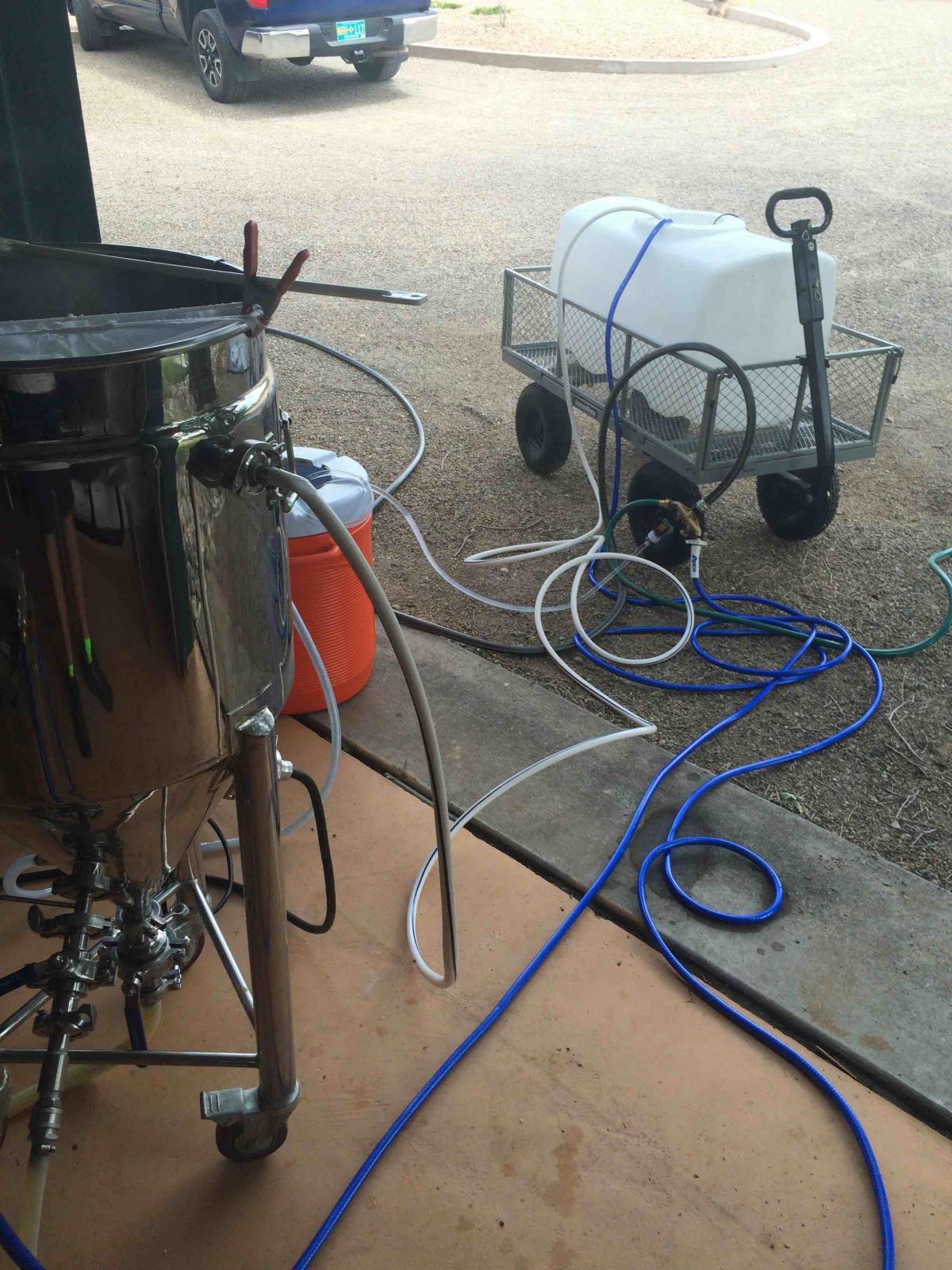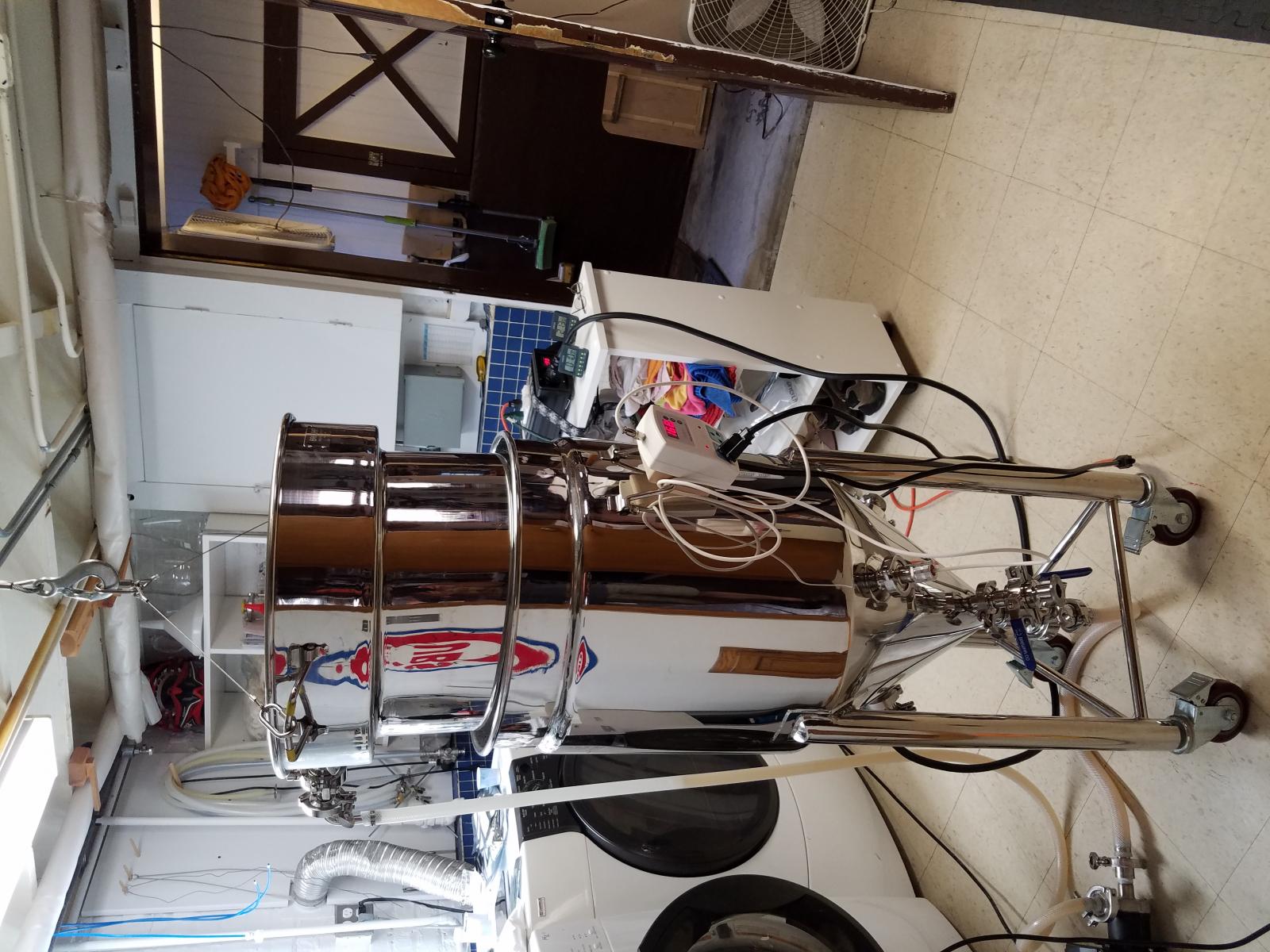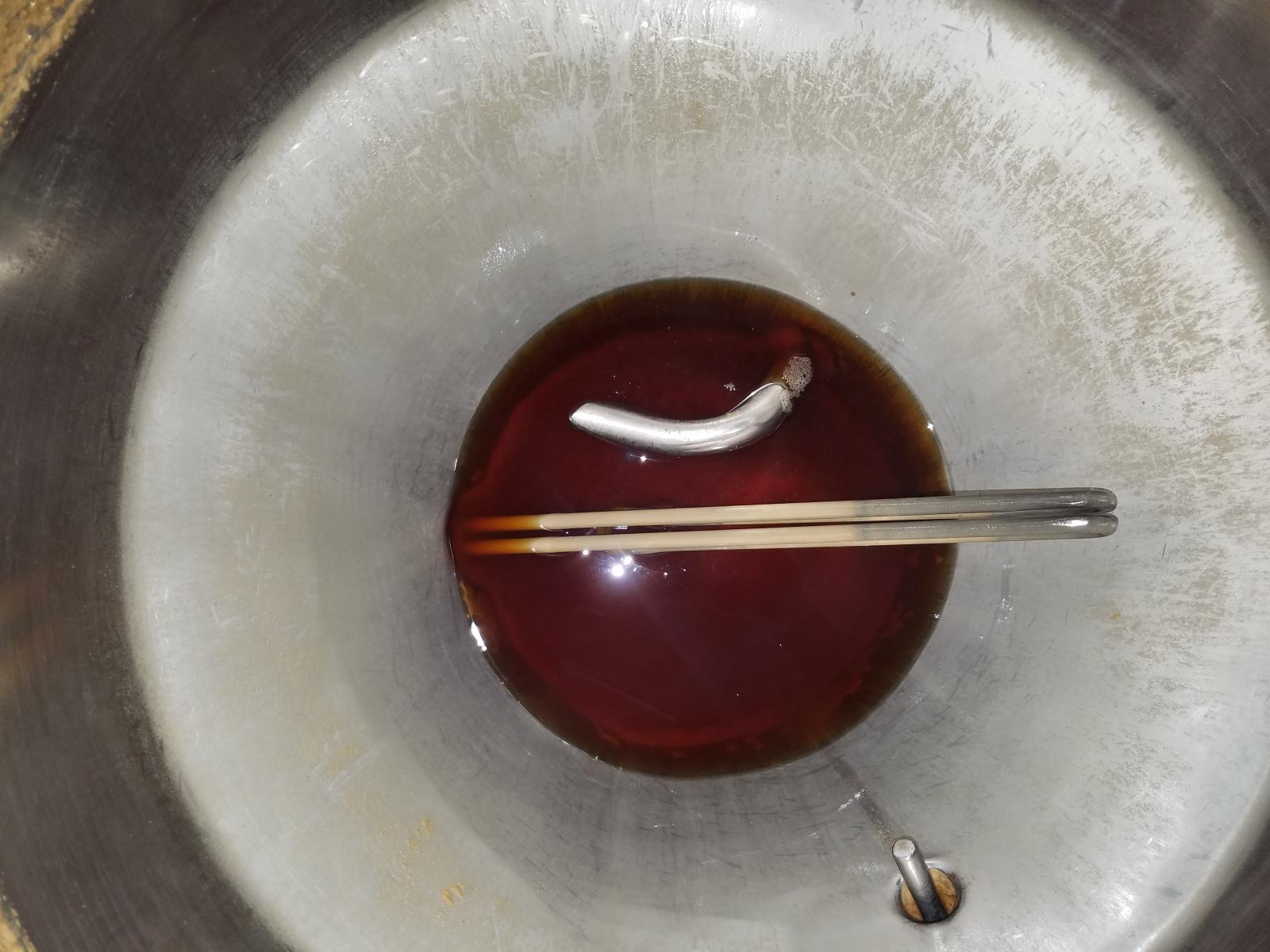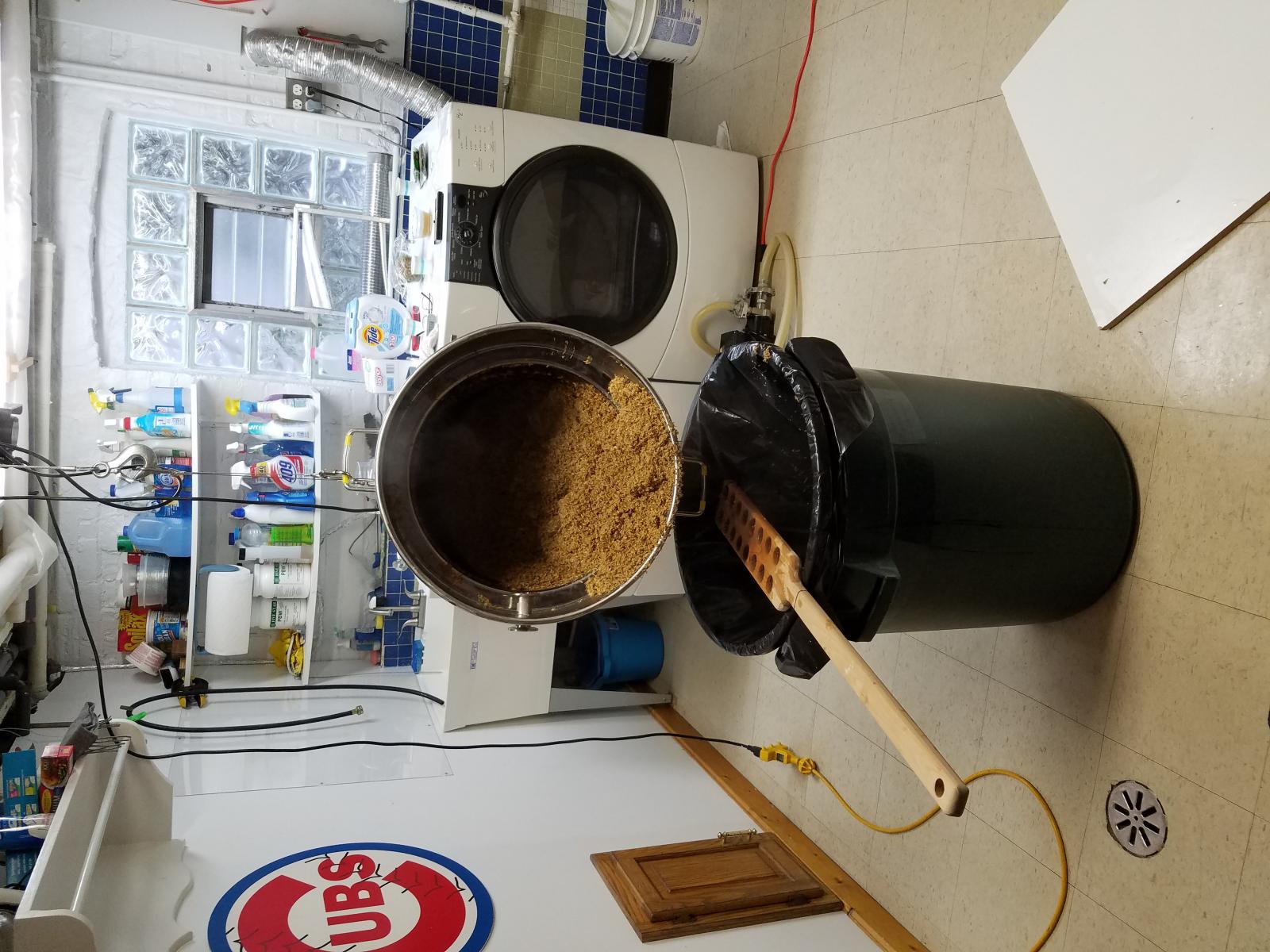Hgearle,
I never thought of doing that. Great advice. Should also help remove some of the fines with the malt.
Do you ever remove any solids from the bottom after mashing, before boiling?
Thanks...Ron8
Hi Ron8 et al.,
At the end of the mash, I raise the temperature to 172+ and mash out for 10 minutes. Then, I raise the colander until it is above the wort and dripping into the kettle and continue to run the pump so I sparge the grains. I will let the wort flow until I get a few inches above the grain bed. There is still a lot of sugars to be gotten from the grain and this helps with efficiency. This can be done for 10 to 30 minutes until you feel you have gotten the most out of the grain. I then set the temp controller to 195F so as the wort is heating up as I remove the pump from the bottom and top of the BIAC. As the grain bed continues to drain, which can take 20+ minuets, the wort is heating up. At the end when I am tired of waiting for the the grain bed to drain, I place a large garbage bag over the mash tun so I can move the kettle outside my door to boil. This gives me the opportunity to start the boil as the last 2 quarts of wort are draining into the bag. I will then re-hoist the mash tun with the top and bottom handles connected to the hoist, raise it and then dump the grains into a large garbage barrel. If I think I need to, I will bring the half gallon of wort that was drained into the garbage bag over to the kettle and slit the bag with scissors to add the wort to the kettle.
The setup of the recirculating pump is only set aside, because I am going to hook it back up again once the boil is finished to whirlpool the hops and help with circulation during cooling. Heating the wort to boiling only take minutes now.
I recirculate from the bottom valve for the mash, BUT I recirculate from the wort transfer port for whirlpooling. With b1v1r 's great post (post 652) to build a whirlpool device, you can get a raging whirlpool not only to whirlpool hops for amazing juicyness, but to aid in cooling as you recirculate cold water through the jacket to cool the wort. Also, there is no reason to recirculate from the bottom valve where all the sediment is if you can do is at a higher altitude. I also have the SP400RA (1240) Racking Arm for Fermenters from Stout Tanks and Kettle($39.99) which I feel is a necessity for the BIAC. It gives you complete control over the depth or wort being transferred to your kegs. With the Racking arm facing right, and the raging whirlpool going right, you can dump on 8 ounces of juicy whirlpool hops and not worry about clogging your pump. But when you are transferring wort to your kegs, you are taking beer from about 2 inches above the level of the racking port outlet which is critical in getting clear wort into the keg. I almost always brew high gravity IPA's so the racking port hole is always covered in sludge. With the SP400 above, the wort is clear because the inlet valve is above the wort and I rotate the racking arm down as the beer transfers until I feel I an getting....not clear wort, then stop.
After my boil is finished, I hook up the pump again to the racking port (previously, the bottom port), and to the top to the whirlpool racking arm port connected to the kettle top. (I do purge the racking port before connecting).
Once the whirlpool is done, I hook up city water to cool to fermentation temp (I am lucky to have cool city water), then hook up to the chiller to hold whatever temp I desire.
I will finish with this ....the water your brew with is critical to what you are brewing. You cannot brew a Guinness Stout with German pilsner water and you cannot brew a German pilsner beer with water from Ireland. Maybe start with RO/distilled water and add salts (gypsum and calcium chloride) to get to you to where you need to be (
https://www.homebrewtalk.com/showthread.php?t=198460).
I realize that there are many ways to brew with this amazing BIAC. If you see that I can improve on the way I am doing things....please don't be shy in telling me the way you do it. Thanks.
Cheers
PS. I still cannot figure out how to get this site to NOT turn my pictures sideways. If you can tell me how to display my pics the way they show on my computer, it would be appreciated.

























































